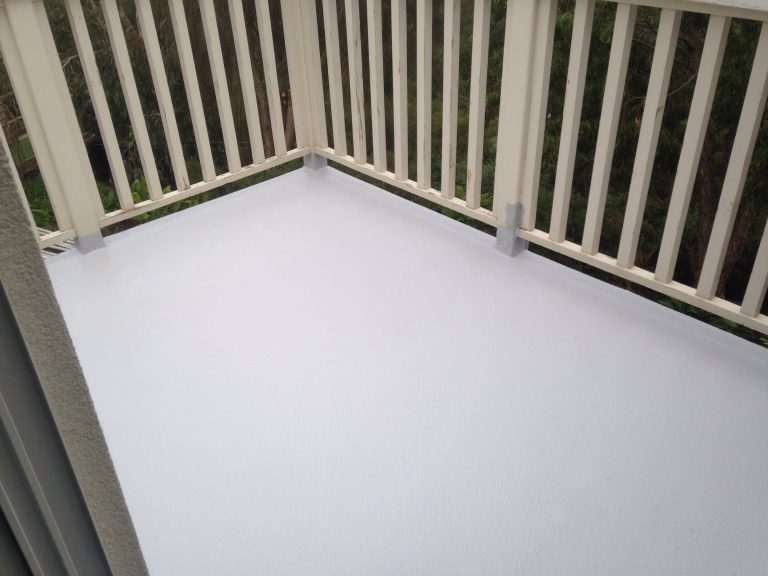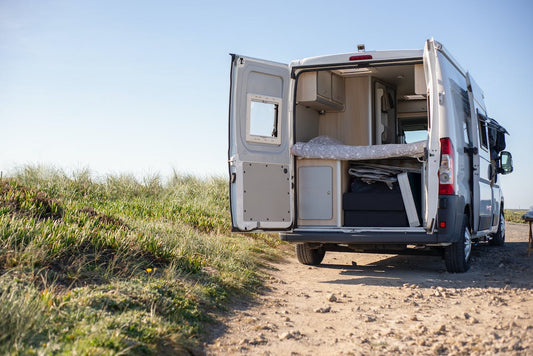How do I fix a balcony myself with Liquid Rubber?
|

Why You Can't Afford a Leaky Balcony (and How to Fix It)
If your property has a balcony, you need to be aware of how to waterproof it for the safety of your residents. This guide shares what you need to know.
Balconies can be a luxurious way to enjoy fresh air from the comfort of one's own home. They're also a great selling point for apartment complexes, condos, and office spaces.
But if a balcony isn't routinely checked for signs of wear and tear, it's a luxury that can turn into a nightmare.
Ignoring what may seem like a harmless crack in the foundation or a slow drip from a pool of water after a hard rain could be potentially dangerous.
A few years ago, in the United States, innocent students attending a birthday party at the Liberty Gardens Apartment complex were killed when a balcony collapsed.
In this case, the balcony tore away from the rest of the building and the bottom fell out.
It’s these tragic instances that can be prevented if routine checks, renovations, and upkeep are maintained.
Chances are there were cosmetic signs that the balcony was no longer structurally sound, but they were ignored.
Below, we’ve given you a step-by-step guide on how to check the health of your balcony, repair it and fix it with industry standard products:
Create a Spreadsheet of Visual Checks
The best way to prevent a balcony catastrophe is to do routine visual checks for signs of wear and tear. Experts suggest checking for cracks, rust, and discolouration in both the floor and the roof of the balcony before recording your findings in a spreadsheet.
This will give you a gauge to compare your data as you perform your monthly checks. This way, in around six months, you’ll have enough information to analyse changes that may have occurred in this time.
This spreadsheet will be helpful for you so that you can see if the cracks have gotten longer or discolouration has spread as well as good for a hired expert to help assess and fix the problem.
Fair Trading of New South Wales recommends checking for all of these elements when recording your routine checks:
- Pools or water on the balcony which may lead to water damage and leaks
- Loose handrails
- Tops of balustrades and connection points
- Lining board that may obstruct your view while conducting visual checks of the connection points
- Beams that span long distances and don’t have any support
- Beams that are bowing or warping due to weight and general wear and tear
Once an issue is identified, it is best to bring in an expert to go over your options for repairing your balcony.

How to Fix the Problem
The first step in fixing your balcony once you’ve done your routine checks is to repair the concrete damage and choose which sealant will work best. It is always best to call in a licensed professional at this point, as you don’t want to put yourself in danger from possibly unsound structures.
That said, for those who would like to know the process of repair, we list the general steps below:
- The first step is to clear all the items off your balcony as well as make sure you block off the area so friends and family members are safe.
- Then, measure the square meterage of the deck so that you know how much compressed cement sheet to buy and make sure to purchase 20% extra in case you make any mistakes.
- Next, tear up the current rotted flooring system with a pry bar or circular saw.
- Once that's done, lay a couple pieces of plywood or compressed cement sheet down so that you can safely walk on the balcony and start cutting the other pieces to size.
- Now it's time to install the new substrate. We recommend using compressed cement sheet (ie. Scyon). Make sure to grind back the waxy surface of the Scyon and vacuum/clean extremely well. This is paramount! If the surface has any dust or dirt the Liquid Rubber will NOT bond.

Using Liquid Rubber to Waterproof Your Balcony
There are many waterproofing options available on the market, but some have their shortcomings. For instance, the torch-on method can damage roof wiring and sheet membranes can de-laminate and tear. This is why we use the gold standard of liquid applied membranes. Liquid applied membranes also allow the application to be made by DIY people.
Using Liquid Rubber provides a strong, flexible seamless membrane. Since it is applied with a roller and a brush, it gives more control over the product. This aids in really sealing those pesky nooks and crannies.
This product is also non-toxic, odourless and non-flammable. There are no transportation hazards throughout the process of application or after, making it the safest choice for you, your family, and your business.
Liquid rubber membranes also come with a manufacturer's guarantee and can be used on both horizontal and vertical surfaces.
Its application also doesn’t require any additional primers or mixers. And the extra elasticity of the membrane protects against cracks and tears.
This membrane also withstands various weather conditions and will not oxidise or loosen over time. It truly is the ultimate gold standard in waterproofing.

Maintaining Your Balcony
In the case of the news story we opened with, it is plausible that throughout time, water and weather elements slowly ate away at the balcony's foundation. This could have been due to insufficient waterproofing which ultimately led to tragic circumstances.
After all, the first step in maintaining your balcony is to choose the best and most reliable waterproofing method in order to protect your structure. And we’ll be happy to discuss your waterproofing needs, as well as explain the other many benefits of a liquid membrane waterproofing application.



